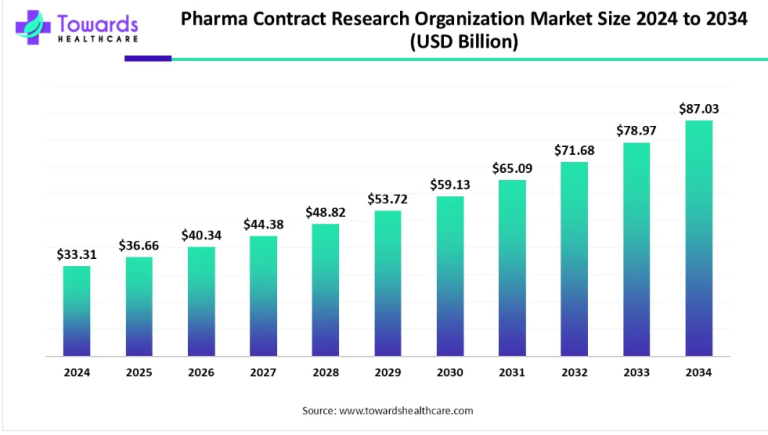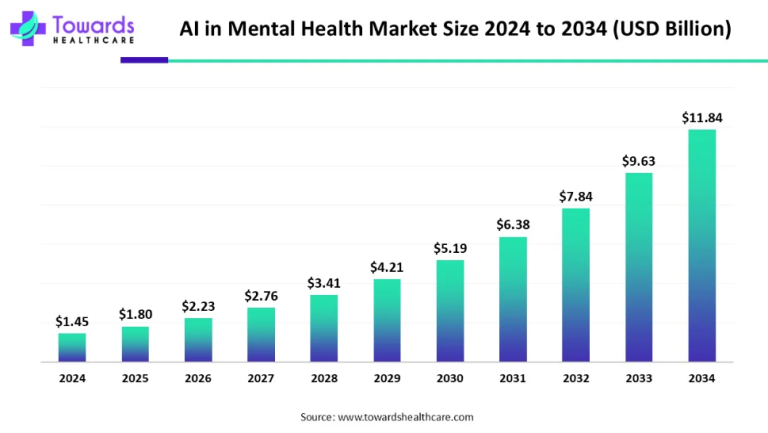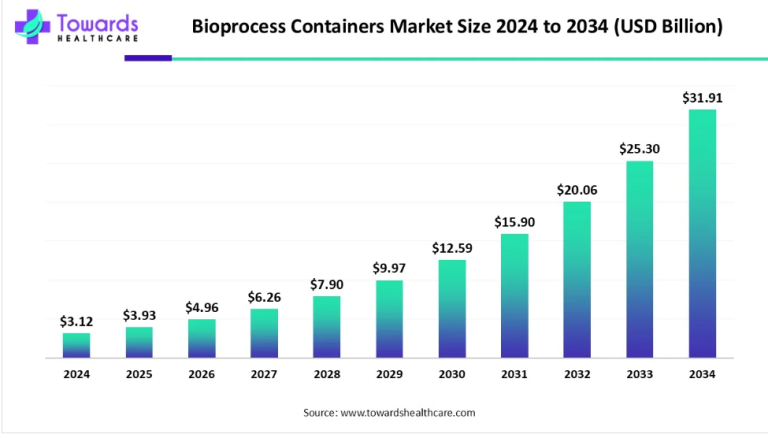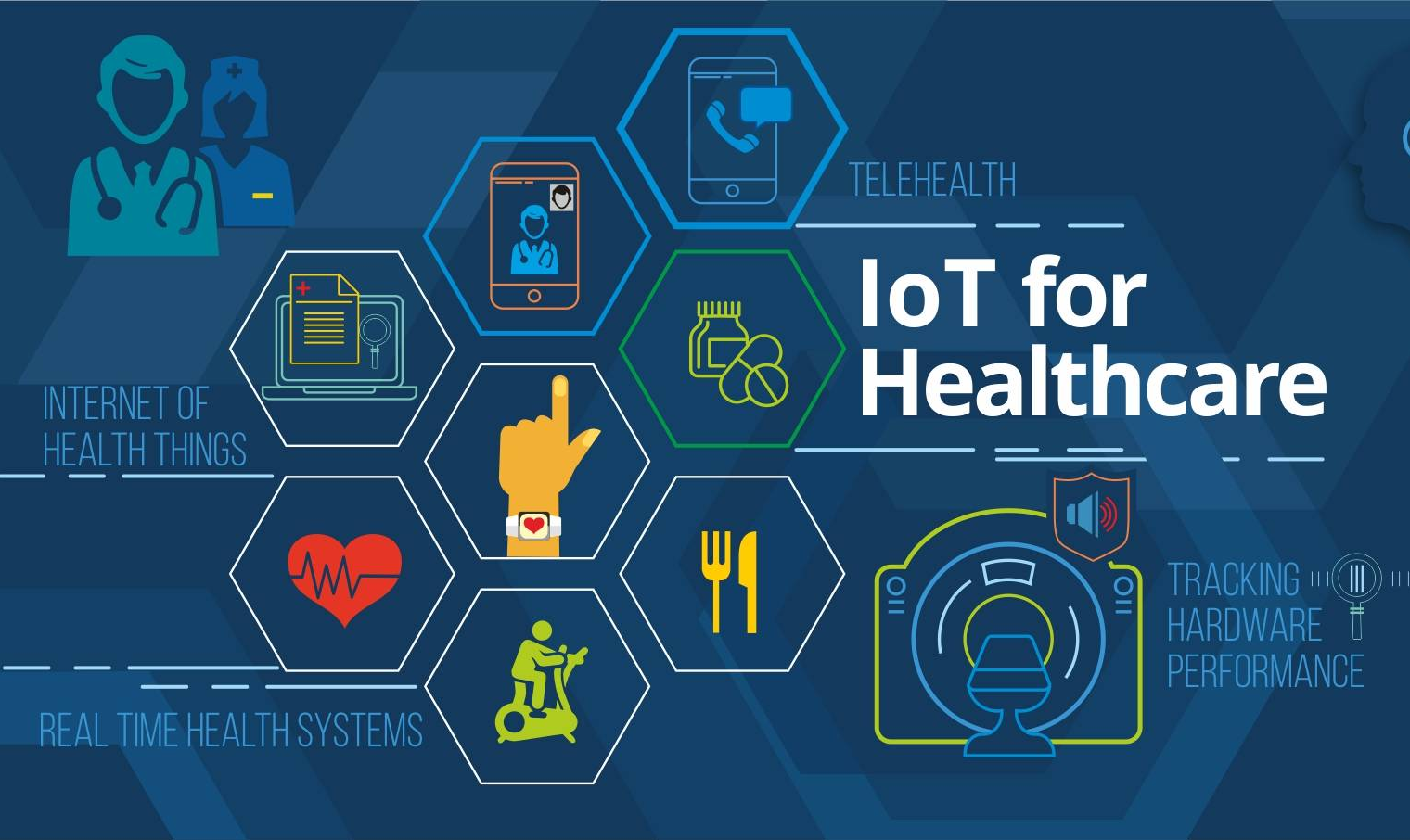
The global IoT in healthcare market has witnessed unprecedented growth, surpassing USD 36.20 billion in 2022 and projected to reach a staggering USD 305.55 billion by 2032. With a remarkable CAGR of 23.4%, this transformative paradigm is reshaping the healthcare sector. In this article, we delve into the intricacies of IoT in healthcare market, exploring its applications, market dynamics, and the pivotal role it plays in shaping the future of medical practices.
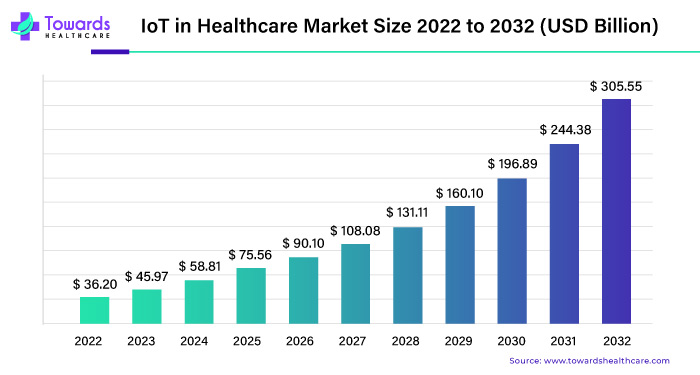
In 2023, according to the American Hospital Association, about 74% of patients in the US used telehealth services through the IoT in healthcare, showing tremendous growth in the healthcare sector.
- IoT in Healthcare Market: A Seamless Ecosystem
- Creates interconnected ecosystem for real-time communication in medical practices.
- Facilitates efficient collection and sharing of healthcare data for informed decision-making.
- Driving Factors Behind IoT in Healthcare Market Growth
- Rapid technological advancements in sensors, connectivity, and data analytics.
- Increased demand for remote patient monitoring.
- Impact of the COVID-19 pandemic accelerated adoption.
The IoT in healthcare market is a transformative paradigm within the healthcare sector, harnessing the power of connectivity to revolutionise various aspects of medical practices. The essence of IoT in healthcare market lies in creating a seamlessly interconnected ecosystem where medical devices, applications, and systems communicate, share data and collaborate in real time.
IoT in healthcare market involves the integration of a wide array of medical devices, ranging from wearable fitness trackers to sophisticated diagnostic equipment. These devices communicate with each other through the Internet, forming a comprehensive network that allows for continuous monitoring and data exchange. One of the key objectives of the IoT in healthcare is to facilitate the efficient collection and sharing of healthcare data. Medical devices generate a wealth of information, including patient vitals, treatment responses and overall health trends. This data can be instantly transmitted to healthcare providers, enabling timely and informed decision-making. The IoT in healthcare allows remote monitoring of patients in real time.
Wearable devices, for instance, can track vital signs and transmit this information to healthcare professionals, allowing for proactive intervention and personalized care plans. This is particularly beneficial for patients with chronic conditions or remote locations. The interconnected nature of IoT in healthcare market contributes to more precise diagnostics and treatment strategies. Healthcare providers can access a holistic view of a patient’s health history, enabling them to tailor treatments based on individual profiles. Additionally, IoT in healthcare can facilitate the integration of artificial intelligence algorithms for more accurate diagnostics.
The global application of the IoT in healthcare market is experiencing a remarkable increase, driven by an intersection of factors. Rapid technological advancements in sensors, connectivity, and data analytics foster the development of sophisticated IoT in healthcare solutions, providing healthcare with innovative tools for improved patient outcomes and operational efficiency. The demand for remote patient monitoring, amplified by ageing populations and the prevalence of chronic diseases, has accelerated IoT in healthcare adoption.
The COVID-19 pandemic has further propelled the acceptance of IoT in healthcare with the rapid adoption of telehealth and remote monitoring solutions. Increased investments in digital health technologies, supportive regulatory frameworks, collaborative efforts, and the global trend toward personalized healthcare contribute to the widespread growth and application of IoT in healthcare globally. This surge signifies a transformative shift in healthcare, leveraging interconnected technologies to enhance medical practices and patient care worldwide.
- Remote Monitoring: Bridging Healthcare Gaps
- Addresses significant gap in global access to healthcare.
- Enables real-time remote patient monitoring through wearables and remote systems.
- Impact of COVID-19: A Catalyst for IoT in Healthcare Market
- Pandemic accelerated telehealth adoption.
- 20% growth in IoT in healthcare market in 2020.
- Emergency Use Authorizations emphasized urgency.
Rising Popularity of Remote Monitoring
The World Health Organization (WHO) suggests that only 14 of every 100 individuals globally receive the necessary healthcare. Each year, around 40 million people require palliative care, with approximately 78% of them residing in economically challenged nations. This underscores the significant gap in access to care, especially for those facing life-threatening illnesses, particularly in regions with limited resources.
The growing need for remote patient monitoring, especially in the context of ageing populations and the prevalence of chronic diseases, fuels the demand for IoT in healthcare market solutions. These technologies enable healthcare providers to monitor patients in real time, enhancing patient care and reducing the burden on healthcare facilities. The increased demand for remote monitoring, a key driver in the growth of the IoT in healthcare market, is rooted in several critical factors.
Firstly, the ageing population worldwide is leading to a higher incidence of chronic diseases and a greater need for continuous health monitoring. IoT in healthcare solutions, such as wearable devices and remote monitoring systems, address this demand by providing real-time data on patients’ vital signs and health metrics. This capability is particularly beneficial for individuals with chronic conditions, allowing healthcare providers to detect early signs of deterioration or changes in health status.
Additionally, the prevalence of chronic diseases has put a strain on healthcare facilities, necessitating more efficient and proactive approaches to patient care. IoT in healthcare market facilitates remote patient monitoring, enabling healthcare professionals to track patients’ health parameters without frequent in-person visits. This enhances patient care by allowing for timely interventions and reducing the burden on healthcare facilities, optimizing resource allocation and overall operational efficiency.
Impact of COVID-19 on Iot in Healthcare Market
The COVID-19 pandemic has accelerated the adoption of IoT in healthcare market, with telehealth and remote monitoring solutions becoming increasingly popular and increased investment in digital health technologies. During the COVID-19 pandemic, regulatory bodies such as the U.S. FDA expedited approvals for various devices to tackle the challenges posed by the virus.
- In May 2020, notable examples include the Whoop Strap, which was designed for measuring respiratory rates, and Philips’ disposable patches and biosensors, which were customized for detecting COVID-19.
- In 2020, Scripp’s ‘DETECT’ system capable of gathering data from wearable devices, Taiwan’s innovative testing and tracing architecture, Eko’s electrocardiogram tool for assessing cardiac complications, the ‘Lumify’ portable ultrasound, and Aidoc Medical’s AI-CT algorithms for COVID-19 detection.
The IoT in healthcare market experienced substantial growth during this period, indicating a notable 20% increase from 2020. This surge underscores the accelerated adoption of IoT in healthcare technologies in the Healthcare sector. IoT in healthcare applications, particularly in remote monitoring of vital signs, general health conditions, nutrition monitoring, and rehabilitation for elderly or infected patients, are pivotal in enhancing life expectancy and mitigating morbidity and mortality rates. The versatile applications of IoT in healthcare contribute significantly to the evolving healthcare landscape during these challenging times.
FDA-Issued Emergency Use Authorizations of Remote Monitoring Devices
| Sr. No. | Date EUA Issued | Device Type | Letter of Authorization |
| 1. | 14 May 2020 | Remote Patient QT Interval Monitor | G Medical Innovations, Ltd., VSMS Patch |
| 2. | 11 May 2020 | Nurse Call System | Ascom(US), Telecare |
| 3. | 26 April 2020 | Remote Patient Monitoring | PhysiolGaurd, ECG-QT Analysis System |
| 4. | 8 May 2020 | Patient Isolation Transport Unit | Patient Isolation Transport Device |
The IoT in healthcare market experiences growth in response to this increased demand as healthcare providers and institutions recognize the potential benefits of adopting remote monitoring solutions. The ability to monitor patients in real-time improves the quality of care and contributes to cost savings by preventing hospital readmissions and minimizing emergency interventions. As a result, there is a growing investment in IoT in healthcare technologies to meet the expanding requirements for remote patient monitoring. The convergence of these factors—ageing populations, rising chronic disease rates, the need for efficiency in healthcare delivery, and the proven benefits of IoT in healthcare solutions—contributes to the sustained and increasing growth of the IoT in healthcare market globally.
Exploring the Pinnacle of Healthcare Innovation Through the Transformative Growth of the IoT in Healthcare
The IoT in healthcare market is experiencing growth due to advancements in technology. This expansion is evident in the increased adoption of innovative devices and solutions in healthcare. The swift evolution of IoT in healthcare contributes to improved capabilities, efficiency, and effectiveness in monitoring and managing various aspects of health. As a result, this technological progress fosters the growth of the IoT in healthcare market, providing healthcare professionals with enhanced tools for remote monitoring, diagnostics and personalized care. The continuous advancements in IoT in healthcare market meet the evolving needs of the healthcare sector and contribute to the overall expansion and impact of this transformative technology on the industry.
In correlation with these trends, the IoT in healthcare market is witnessing an increase. The surge in telemedicine adoption contributes significantly to the growth of IoT in healthcare technologies, showcasing a growing reliance on interconnected medical devices for remote healthcare services. The preference for teleconsultations, driven by convenience and satisfaction, underscores the expanding role of IoT in healthcare in reshaping the healthcare landscape on a global scale.
- In November 2020, VitalConnect introduced the VitalPatch RTM, an innovative cardiac monitoring patch designed for patients needing prolonged Holter monitoring. This wearable biosensor employs an artificial intelligence electrocardiogram sensor to detect 21 cardiac arrhythmias. The device tracks four vital signs: heart rate, variability, respiratory rate, and activity.
- In September 2022, GE Healthcare Technologies Inc. unveiled the Optima IGS320, a state-of-the-art cath lab infused with artificial intelligence. This innovation elevates the precision of medical imaging, facilitating intelligent and accurate healthcare delivery.
- In August 2022, GE Healthcare Technologies and Boston Scientific are collaborating to manufacture the medical devices. This collaboration signifies a significant driver for market growth.
Privacy and Security Constraints
The expansion of the IoT in healthcare market faces obstacles primarily rooted in privacy and security apprehensions. IoT in healthcare devices, which generate and transmit substantial volumes of sensitive health data, evoke concerns regarding unauthorized access and the possibility of data breaches. This heightened vulnerability prompts patients and healthcare providers to be cautious about the confidentiality of personal health information.
Additionally, The fear of potential breaches and misuse of health data contributes to a reluctance among stakeholders to adopt IoT in healthcare solutions. This hesitation stems from the paramount importance of safeguarding sensitive medical information, which, if compromised, could lead to severe consequences for individuals’ privacy and healthcare institutions’ integrity.
To mitigate these concerns and promote the widespread adoption of IoT in healthcare technologies, it is imperative to implement and continuously enhance robust privacy and security measures. This involves employing encryption protocols, secure data transmission mechanisms and stringent access controls. Additionally, compliance with regulatory standards and frameworks such as HIPAA (Health Insurance Portability and Accountability Act) is crucial in establishing trust within the healthcare ecosystem.
By addressing these privacy and security challenges effectively, the IoT in healthcare market can instil confidence among users, paving the way for broader acceptance and unlocking the full potential of these transformative technologies in improving healthcare delivery and patient outcomes.
The Key Role of Telehealth
The increasing demand for telehealth drives the IoT in healthcare market. As telehealth gains prominence, IoT in healthcare is pivotal in facilitating remote patient monitoring, telemedicine consultation, and efficient data exchange between healthcare providers and patients. This surge in demand is fueled by the need for accessible and convenient healthcare solutions, leading to integrating IoT in healthcare market devices and technologies to enhance patient care, streamline processes, and ultimately contribute to the growth of the healthcare industry.
Some notable highlights:
- Data from NOW Health International reveals that 80% of individuals have accessed healthcare through telemedicine at least once.
- In 2023, according to a report by Rock Health, four out of five people have utilized telemedicine services. Notably, the report highlights a robust growth in telemedicine adoption in 2022, especially among traditionally underserved healthcare groups. This includes a 12% increase in adoption among those over 55 and a 13% increase among individuals residing in rural areas.
- In 2022, a GlobalMed report found that 74% of millennials prefer the convenience and immediacy of teleconsultations over in-person appointments.
- The National Telemedicine Service of India, or eSanjeevani, is one of the world’s largest healthcare telemedicine businesses. eSanjeevani has proven to be a blessing, particularly for people in rural areas who previously had limited access to medical care.
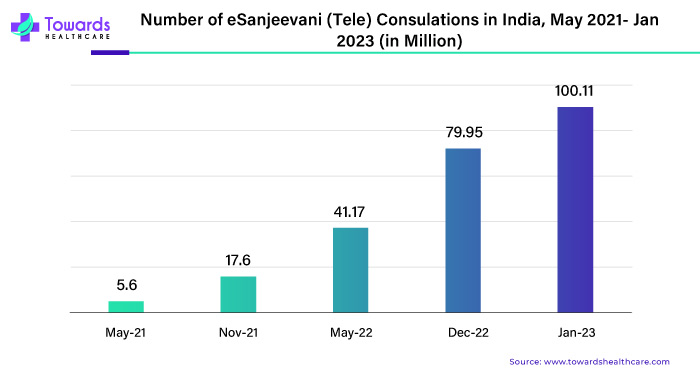
Telehealth, as a component of the broader IoT in healthcare, has been experiencing significant growth. Even before the COVID-19 pandemic, telehealth was gaining traction, and the global health crisis further accelerated its adoption.
Benefits of Telehealth
- Limited physical contact lowers everyone’s exposure to COVID-19.
- Virtual visits ensure you receive health care wherever you are- at home, work, or even in your car.
- Virtual visits reduce travel, time away from work, and the need for child care.
- Virtual Healthcare tools can reduce the wait for an appointment.
- Increased access to specialists Located far away from your hometown.
Geographical Landscape
The IoT in healthcare market in North America presents a dynamic and robust landscape, with the region at the forefront of advanced healthcare technology adoption. The United States and Canada are pivotal in shaping this market, with the U.S. serving as a significant driver of IoT in healthcare innovation. Factors influencing the U.S. IoT in healthcare market include leading technology companies, extensive healthcare R&D activities, and a strong focus on digital health solutions.
Collaborations between technology firms, healthcare providers, and regulatory bodies contribute significantly to the growth of IoT in healthcare market applications. Meanwhile, Canada demonstrates a growing interest in IoT in healthcare, leveraging its advanced healthcare system to integrate intelligent medical devices. Government initiatives and partnerships between healthcare organizations and technology companies fuel IoT in healthcare developments in Canada, emphasizing enhancements in patient care, optimized healthcare workflows, and addressing challenges through technological advancements.
The European IoT in healthcare market showcases a diverse and rapidly evolving landscape. Major economies, including Germany, the United Kingdom and France, are at the forefront of IoT in healthcare adoption, leveraging advanced healthcare technologies. These countries boast robust infrastructure and healthcare systems, fostering a conducive environment for IoT in healthcare integration. Eastern European nations, such as Poland and Hungary, are also witnessing growing interest in IoT in healthcare solutions, driven by increasing healthcare investments and a focus on technological advancements. The Southern European region, including Spain and Italy, is gradually embracing IoT in healthcare, with healthcare providers exploring ways to enhance patient care through innovative technologies.
The Asia Pacific IoT in healthcare market is undergoing dynamic growth, marked by heightened healthcare technology adoption. Key contributors to this transformative evolution include influential countries such as China, where substantial investments in healthcare technology have positioned it as a central influencer. China’s focus on digital health initiatives and technological innovation, coupled with its vast population, creates a fertile ground for developing IoT in healthcare solutions.
Competitive Landscape
The competitive landscape of the IoT in healthcare market is characterized by a mix of established players, innovative startups, and technology giants. Several vital companies are actively contributing to advancing and expanding IoT in healthcare technologies. The IoT in healthcare market is dynamic and new entrants and partnerships continually shape the competitive landscape.
Recent Developments:
- In 2023, Medtronic plc acquired EOFlow Co., the manufacturer of EOPatch devices. The company aims to complement its current future Continuous Glucose Monitor (CGM) and Meal Detection Technology algorithm.
- In June 2021, CONNEQT and LifeQ partnered to deliver health-related information to wearable device users. This collaboration signifies a mutual effort to enhance the provision of health data through wearable technology.
- In 2020, Philips got approval from the Food and Drug Administration for the Remote Patient Monitoring Devices.
Market Players
- GE Healthcare
- Siemens Healthineers
- Philips Healthcare
- Apple
- Samsung
- Microsoft
- Medtronic
- Boston Scientific
- Garmin
- Fitbit
Market Segments
By Component
- Hardware
- Wearable Devices
- Implantable Devices
- Others
- Software
- Services
By Application
- Telehealth
- Medication Management
- Digital Imaging
- Surgical Robotics
- Real-Time Patient Monitoring
- Others
By End User
- Hospitals & Clinics
- Home Care
- Research Institutes
By Geography
- North America
- Europe
- Asia-Pacific
- Latin America
- The Middle East and Africa
